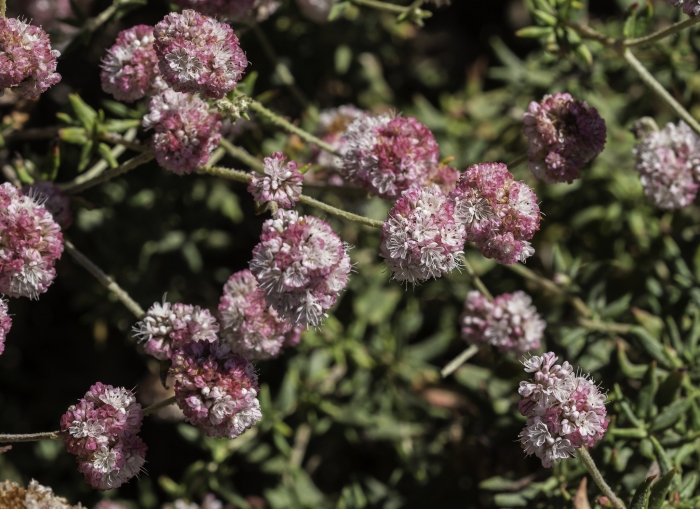Seacliff Buckwheat
(Eriogonum parvifolium)
Seacliff Buckwheat (Eriogonum parvifolium)
/
/

Craig Martin
Public Domain
Image By:
Craig Martin
Recorded By:
Copyright:
Public Domain
Copyright Notice:
Photo by: Craig Martin | License Type: Public Domain | License URL: http://creativecommons.org/publicdomain/zero/1.0/ | Rights Holder: Craig Martin | Publisher: iNaturalist | Date Created: 2018-09-21T14:55:58-07:00 |


























































Estimated Native Range
Summary
Eriogonum parvifolium, commonly known as Seacliff Buckwheat, is an evergreen shrub or subshrub native to coastal bluffs, sandy plains, and chaparral regions of California. It typically grows to a height of 30 to 100 centimeters with a similar spread, forming a low, rounded mound. The foliage is green with a reddish tinge, and the plant produces clusters of small, pom-pom-like flowers that are white to pinkish or yellowish-green, blooming from late spring to early fall. The flowers are attractive to pollinators, including bees and butterflies, making it a valuable addition to wildlife gardens.
Seacliff Buckwheat is appreciated for its drought tolerance, low maintenance requirements, and its ability to thrive in poor soils, including clay, which it tolerates better in cultivation than in the wild. It is often used in native plant gardens, as ground cover, and for erosion control on slopes. This species prefers full sun but may tolerate some shade in cultivation. It requires medium amounts of water and well-drained soils, with a pH range from mildly acidic to mildly alkaline. While generally pest-free, it can be susceptible to root rot in poorly drained soils. Seacliff Buckwheat is also used in restoration projects due to its adaptability and ecological benefits.CC BY-SA 4.0
Seacliff Buckwheat is appreciated for its drought tolerance, low maintenance requirements, and its ability to thrive in poor soils, including clay, which it tolerates better in cultivation than in the wild. It is often used in native plant gardens, as ground cover, and for erosion control on slopes. This species prefers full sun but may tolerate some shade in cultivation. It requires medium amounts of water and well-drained soils, with a pH range from mildly acidic to mildly alkaline. While generally pest-free, it can be susceptible to root rot in poorly drained soils. Seacliff Buckwheat is also used in restoration projects due to its adaptability and ecological benefits.CC BY-SA 4.0
Plant Description
- Plant Type: Shrub, Subshrub
- Height: 1-1.5 feet
- Width: 1-2 feet
- Growth Rate: Moderate
- Flower Color: Pink, White
- Flowering Season: Fall, Spring, Summer
- Leaf Retention: Evergreen
Growth Requirements
- Sun: Full Sun
- Water: Medium
- Drainage: Fast
Common Uses
Bee Garden, Bird Garden, Border Plant, Butterfly Garden, Deer Resistant, Drought Tolerant, Groundcover, Low Maintenance, Rock Garden, Showy Flowers
Natural Habitat
Coastal bluffs, sandy plains, and chaparral regions
Other Names
Common Names: Dune Buckwheat, Coast Buckwheat, Cliff Buckwheat
Scientific Names: , Eriogonum parvifolium, Eriogonum parvifolium subsp. paynei, Eriogonum parvifolium var. paynei, Eriogonum parvifolium var. crassifolium, Eriogonum parvifolium subsp. lucidum, Eriogonum parvifolium var. lucidum, Eriogonum parvifolium subsp. typicum,
GBIF Accepted Name: Eriogonum parvifolium Sm.